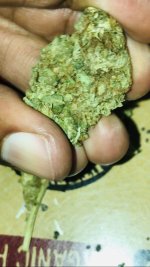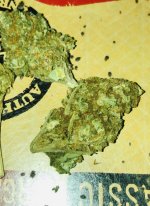I was lucky to meet a grower who’s breeding a heavy hitter sativa from southern Congo.
The buds produce a flavor that’s similar to coffee combined with an earthy and orange. It was a great experience smoking the southern Congo and I also got to carry some seeds
The buds produce a flavor that’s similar to coffee combined with an earthy and orange. It was a great experience smoking the southern Congo and I also got to carry some seeds
Attachments
-
 B1C9CCAB-0FDA-47CD-B183-6F31E2958529.jpeg339.8 KB · Views: 193
B1C9CCAB-0FDA-47CD-B183-6F31E2958529.jpeg339.8 KB · Views: 193 -
 3A1F22AC-7AE5-4B1E-A24B-1707C2910BCB.jpeg248.8 KB · Views: 179
3A1F22AC-7AE5-4B1E-A24B-1707C2910BCB.jpeg248.8 KB · Views: 179 -
 90E665ED-2627-4C09-B9C2-A27F9980FE81.jpeg226.4 KB · Views: 170
90E665ED-2627-4C09-B9C2-A27F9980FE81.jpeg226.4 KB · Views: 170 -
 7F5036A6-3EB1-4EAC-B16D-1A4354804889.jpeg269.4 KB · Views: 160
7F5036A6-3EB1-4EAC-B16D-1A4354804889.jpeg269.4 KB · Views: 160 -
 91DA5D6A-FBC1-45B6-B238-B1E59B0C763E.jpeg281.3 KB · Views: 163
91DA5D6A-FBC1-45B6-B238-B1E59B0C763E.jpeg281.3 KB · Views: 163 -
 42D55392-F6EA-48BC-956B-304690CCBA9F.jpeg163.9 KB · Views: 194
42D55392-F6EA-48BC-956B-304690CCBA9F.jpeg163.9 KB · Views: 194


